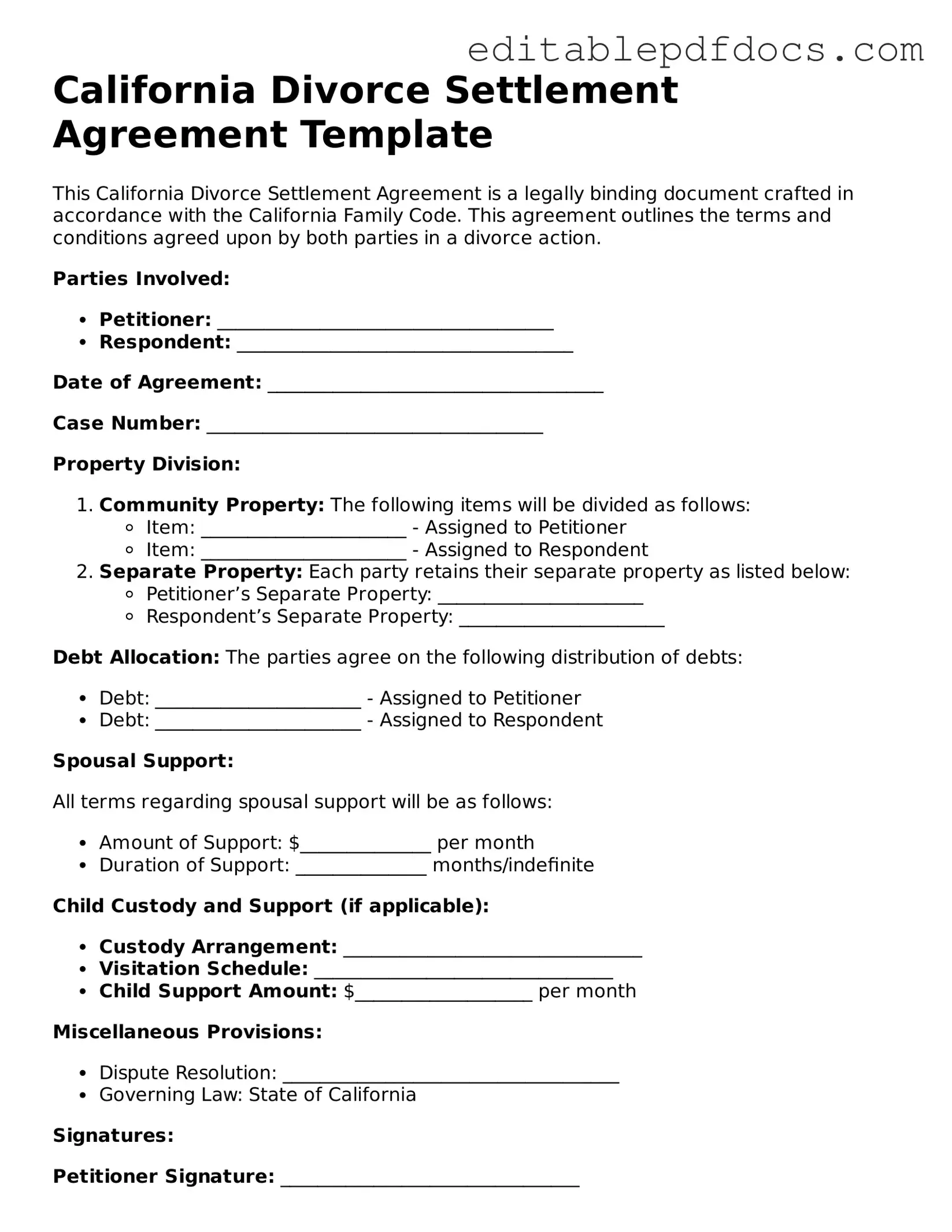Filling out the California Divorce Settlement Agreement form can be daunting. Many people make mistakes that can lead to delays or complications in their divorce process. Here are eight common mistakes to avoid.
One frequent error is not fully understanding the terms of the agreement. It’s essential to read each section carefully. Many individuals rush through the form, assuming they know what everything means. This can lead to misunderstandings about what they are agreeing to.
Another mistake is failing to disclose all assets and debts. Transparency is crucial in a divorce settlement. If one party hides assets or does not list all debts, it can result in legal consequences later. Always be honest and thorough when listing everything.
Some people forget to consider tax implications. For instance, spousal support and property division can have tax consequences that affect future finances. It’s wise to consult a financial advisor or tax professional to understand these impacts before finalizing the agreement.
Additionally, many individuals overlook the importance of including specific details. For example, when addressing child custody or visitation, vague terms can lead to confusion and disputes later. Clearly outline schedules and responsibilities to avoid misunderstandings.
Failing to update the agreement after changes in circumstances is another common mistake. Life can change quickly, and what works today may not work tomorrow. Regularly reviewing and updating the agreement ensures that it remains relevant and fair.
Some people also neglect to seek legal advice. While it’s possible to fill out the form without a lawyer, having legal guidance can help clarify complex issues. A lawyer can provide valuable insights and help ensure that the agreement is fair and comprehensive.
Another issue arises when individuals do not consider the emotional aspects of the agreement. Divorce is not just a legal process; it’s an emotional one too. Failing to address feelings and communication can lead to resentment and conflict, even after the paperwork is signed.
Lastly, rushing through the process is a mistake many make. Taking the time to carefully consider each section of the form can save a lot of trouble down the road. A thoughtful approach can lead to a smoother divorce process and a more satisfactory outcome for everyone involved.
